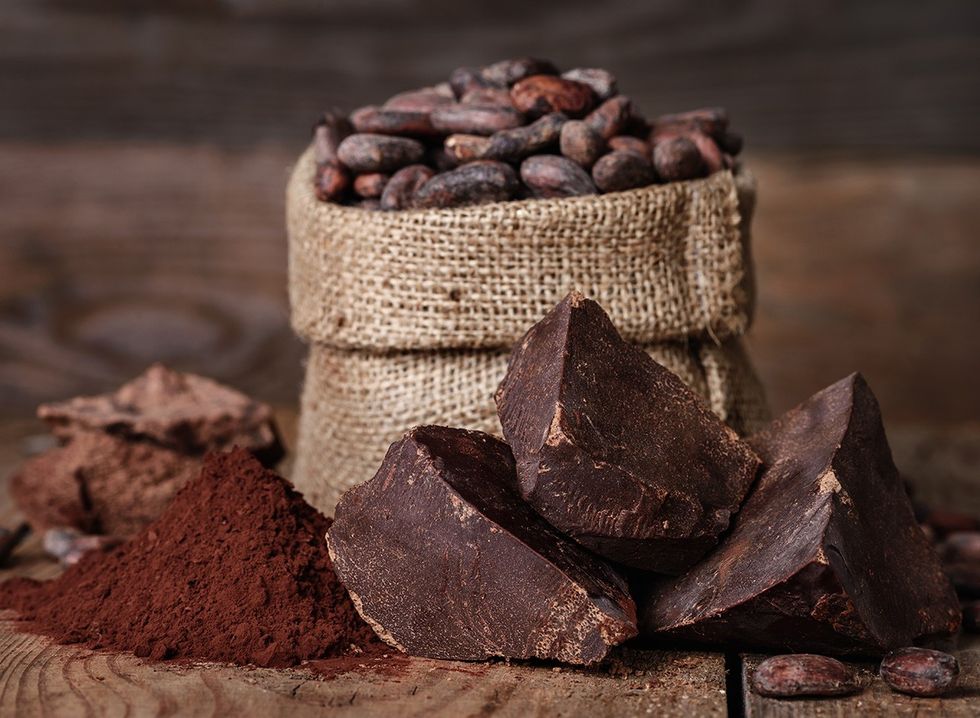Carla Visentin is a Melbourne, Australia-based weight loss influencer who claims to have lost nearly 90 pounds by changing her approach to diet and fitness. Some of her videos, sharing her weight loss journey story and revealing her healthy habits, get over 20 million views. In one viral video she reveals four tips that helped her stop binge eating and enabled her to lose so much weight. We also asked The Diet Diva, Tara Collingwood, MS, RDN, CSSD, LD/N, ACSM-CPT, a Board Certified Sports Dietitian, to weigh in on her tactics.
1. Carla Recommends Developing a Healthy Relationship with Food

In the video Carla explains that she “lost over 40 kilos” by making a few changes to her diet. “Raises of hands, those of you who get into a routine where you're working at every single day, you're eating well every day, everything is going to plan, everything's going your way until you succumb to those cravings and you end up binging, and then suddenly a cheat day turns into a cheat week, and then you're back at square one,” she says. “Trust me, we've all been there. It makes you feel guilty and it sets up a bad relationship with food, and then you end up demonizing this food.” Here are the tips on how she avoids this cycle.
@carlavisentin_ 4 of my BEST tips to not binge eat 🔥💪 DISCLAIMER: These are just some helpful tips, you cannot lose weight unless you’re in a caloric deficit. You got this lets get it 🔥 #weightloss #weightlosstips #weightlosstransformation #diet #fyp
2. Start Off the Day with Something Sweet

Her first tip is to start off the day with something sweet. “I don't know about you, but if you like me, you're a massive sweet tooth. I find that when I do this, it gets rid of my cravings throughout the day because I'm starting off my day with something sweet,” she says. Examples of “something sweet” breakfasts are oats with fruit, fruit and yogurt, fruit and granola, and french toast. “I have pancakes every day,” she confesses.
Related: I Lost Belly Fat With These 3 Easy Hacks You Can Do Today
3. What an RDN Thinks

“I absolutely disagree with this tip,” says Collingwood. “If you start your day with simple carbs you are setting up a cycle of cravings wanting sugar all day long.” Instead, she recommends a high protein breakfast with some high fiber carbs, like a veggie scramble/omelet with high fiber toast or English muffin, Greek yogurt with berries and a sprinkle of high fiber cereal (All Bran, Fiber One, etc), a smoothie with frozen fruit (berries and banana) and 25+ G protein from protein powder or greek yogurt, or cottage cheese and pineapple or tomatoes/cucumber if you want vegetables instead of fruit.
4. Get Creative with Your Cooking

Her second tip: “Get creative with your cooking,” she says. “There is literally a low calorie alternative for all your favorite meals, or you can even eat the same thing. You just change the portion size. I just recommend just not eating blended foods so you're not going crazy all the time. Learn how to cook.”
5. What an RDN Thinks

Collingwood agrees that learning how to cook will help you lose weight. “Try to make foods lower in calories, but if you are too low calorie throughout the day the hunger will set off a binge,” she says. “Make sure you are getting enough calories at each meal to satisfy you for 3-4 hours. If you are hungry just 2 hours after a meal then the meal wasn’t big or satisfying enough.”
Related: 20-Minute Workout for Toning and Strengthening Full Body Without Leaving Your Living Room
6. Schedule a Weekly Cheat Meal

Tip number three, “schedule in a regular cheat meal every single week,” suggests Cara.
7. What an RDN Thinks

While Collingwood tries to stay away from the term “cheat,” she agrees that you shouldn’t completely restrict yourself from some of your favorite foods. “Include them but balance them with high nutrient density/lower calorie foods and limit portions of the high calorie foods,” she recommends.
8. Treat Yourself Every Single Day

Tip number four: “A small treat every single day is going to be your best friend,” she says. “I have dessert every single day. It'll range from just a tiny piece of chocolate when I'm not really feeling like much to a full blown dessert meal.” How does this help you avoid binging? “When you binge, you eat like it's the last time that you're ever going to eat. If you have a treat every single day, you know it's not going to be the last day you're going to have it because you're going to literally have it the next day and the next day and the next day and the next day, and it doesn't even have to be chocolate or anything sweet. It can be literally anything,” she says.
Related: I’m a Dietitian and Here’s What Happens to Your Body When You Give Up Sugar
9. What an RDN Thinks

Collingwood says that indulging daily won’t work for everyone. “If a small amount sets you off to binge, then skip altogether,” she explains. “But if your personality allows you to have a few bits of chocolate or a bite or two of dessert then go for it.” However, this doesn’t mean you can indulge in a large piece of cake every day, “but a few bites can definitely fit and help you feel like you are getting some sweets without going overboard.”
💪🔥Body Booster: What works for one person, doesn’t work for everyone. Before you follow anyone’s weight loss tips, make sure you understand your own triggers. For example, indulging in a piece of chocolate might satisfy one person’s cravings, while set another’s off.








 Shutterstock
Shutterstock Shutterstock
Shutterstock Shutterstock
Shutterstock Shutterstock/siam.pukkato
Shutterstock/siam.pukkato Shutterstock
Shutterstock






 Lie Number FiveCopyright balancebyhilary/Instagram
Lie Number FiveCopyright balancebyhilary/Instagram Lie Number FourCopyright balancebyhilary/Instagram
Lie Number FourCopyright balancebyhilary/Instagram Overcoming These 5 Lies Helped Her Lose 100 PoundsCopyright balancebyhilary/Instagram
Overcoming These 5 Lies Helped Her Lose 100 PoundsCopyright balancebyhilary/Instagram Lie Number OneCopyright balancebyhilary/Instagram
Lie Number OneCopyright balancebyhilary/Instagram Lie Number TwoCopyright balancebyhilary/Instagram
Lie Number TwoCopyright balancebyhilary/Instagram Lie Number ThreeCopyright balancebyhilary/Instagram
Lie Number ThreeCopyright balancebyhilary/Instagram You Can Become the Person You Want to BeCopyright balancebyhilary/Instagram
You Can Become the Person You Want to BeCopyright balancebyhilary/Instagram


 Shutterstock/Krakenimages.com
Shutterstock/Krakenimages.com Shutterstock
Shutterstock Shutterstock
Shutterstock


 I'm a Nutritionist and These 9 High-Protein Snacks Keep My Clients Full While Losing 50 Pounds
I'm a Nutritionist and These 9 High-Protein Snacks Keep My Clients Full While Losing 50 Pounds
 Shutterstock
Shutterstock 2. Processed FoodsShutterstock
2. Processed FoodsShutterstock Shutterstock
Shutterstock Shutterstock/Prostock-studio
Shutterstock/Prostock-studio Shutterstock
Shutterstock Pro TipsShutterstock
Pro TipsShutterstock Shutterstock
Shutterstock Shutterstock
Shutterstock Shutterstock
Shutterstock Shutterstock
Shutterstock Don’t Drink as Much AlcoholShutterstock
Don’t Drink as Much AlcoholShutterstock Most Women on GLP-1s Are Making a Few Common MistakesShutterstock
Most Women on GLP-1s Are Making a Few Common MistakesShutterstock Soda and Sugary DrinksShutterstock
Soda and Sugary DrinksShutterstock Shutterstock
Shutterstock Eat BreakfastShutterstock
Eat BreakfastShutterstock And Improve Insulin SensitivityShutterstock
And Improve Insulin SensitivityShutterstock Belly Flab Strip Tip: Sugar and Fat Calories Leave Its Mark on Your BodyShutterstock
Belly Flab Strip Tip: Sugar and Fat Calories Leave Its Mark on Your BodyShutterstock Shutterstock
Shutterstock The Drugs Mimic the GLP-1 Hormone Naturally Produced by the BodyShutterstock
The Drugs Mimic the GLP-1 Hormone Naturally Produced by the BodyShutterstock 3. Deep-Fried ItemsShutterstock
3. Deep-Fried ItemsShutterstock